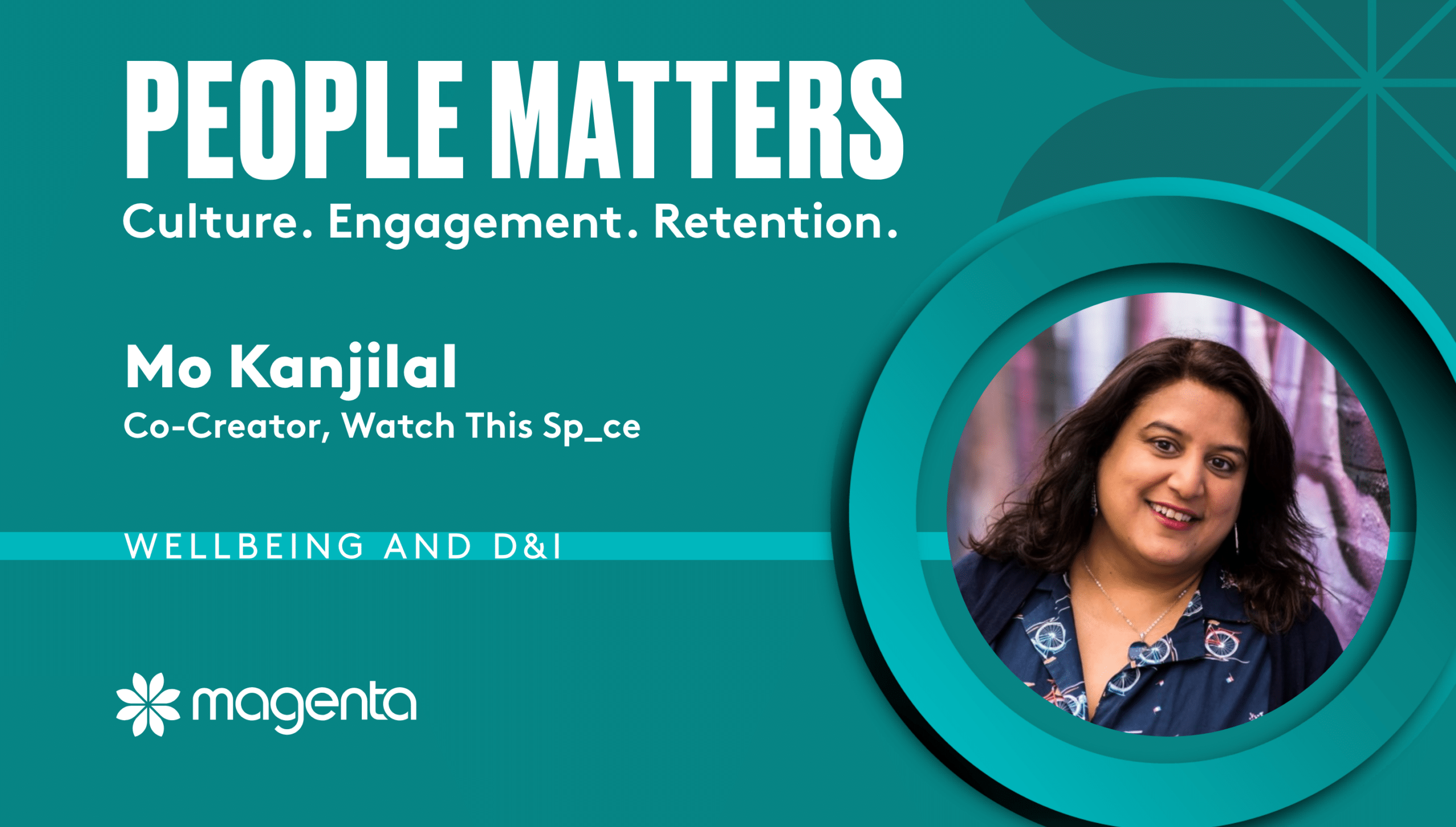For the latest in our People Matters series, we spoke to Mo Kanjilal, co-creator of Watch This Sp_ce, a diversity and inclusion consultancy on a mission to help companies reimagine the way they do things, from their structures and processes to their culture.
Below, Mo discusses how inclusion increases workplace retention and happiness, the effectiveness of face-to-face comms and the power of simplifying comms to reach out to staff effectively.
How is health and wellbeing linked to engagement and performance? Do you have any real-life examples of how focusing on the former boosts the latter?
A lot of research indicates that happy people perform better. If people feel happy and included, they can be themselves. They will feel comfortable to contribute and don’t have to hide.
Wellbeing, diversity, equity and inclusion are about creating workplaces where difference is accepted. As long as people feel they belong, they stay in their roles and perform well, with 50 per cent more likely to stay in their role if they feel included.
We’ve partnered with Richmond Hotel for over a year, delivering several courses. We worked with the hotel to engage their teams, asking them to question what inclusivity looks like and what they want to see and experience. From there, we delivered workshops, surveys, and training, encouraging honest feedback throughout. Employee retention has increased from 46 to 72 per cent.
What do employees really need to thrive?
Being listened to is number one. Employees want to get involved. It’s not just leaders who lead and make decisions. Employees want to work for good businesses. It’s the same for every generation, though younger people scrutinise the organisations they work for more. They want to know how their role fits.
What is the role of communications in making sure people make the most of the benefits and services that their employer offers?
Comms comes out as a top factor every time. It’s ineffective if employees don’t know the benefits and services they can benefit from. Great companies engage in a two-way conversation.
The aim should be to have a real mix of comms because people absorb information in different ways. Face-to-face is always effective, but online can be good too. It’s all about how you engage. Organisations need to empower their line managers to engage with their teams.
It’s also a good idea to create a group comms committee. The employees in this group can then serve as value champions. But you must always find out what works for each specific company.
How have internal communications had to evolve in a world of hybrid working, or where a large part of your workforce is remote?
Companies need to make sure that their internal comms reaches everyone. People on site with clients must receive the same level of comms as office workers, whether it’s written, on video, or through pictures.
Regular feedback is also key. It’s not enough to do an annual survey. That’s why Slack channels are great because its ongoing conversation. It’s important that you constantly find new ways to collaborate.
How do you encourage an authentic inclusive workforce? Not just tick boxes and suit budgets.
Engagement must come from different parts of the organisations, especially leadership. It’s leadership’s responsibility to get employees to buy into what the organisation is doing. They can do this by demonstrating quick wins and presenting a roadmap for change. People are more likely to get on board if they see the latter.
What’s more, it’s imperative that organisations allow their people to disagree. We welcome challenging conversations in our training courses. This allows to engage with the employees. People may not always agree but the process helps everyone come to a better understanding of why the change is taking place.
Often, the disagreement comes from a place of fear. People worry they lose something, such as a position of power, or that they will say the wrong thing. Buy-in is about working with everyone and taking time to listen to and address their concerns.
How can you help ensure the approach to internal communications is inclusive?
Accessibility is crucial. Organisations need to think about how they reach everyone. Again, using different type of comms makes a huge difference. But it’s also important to consider the language you use. Most internal comms are too complicated. Organisations need to simplify how they communicate and speak in conversational tone where possible. Comms should be direct and in bitesize chunks. Finally, it’s helpful if employees know what to expect. If comms goes out every Tuesday, make sure it’s every Tuesday.
People Matters blogs
Read the previous blogs in our People Matters series:









